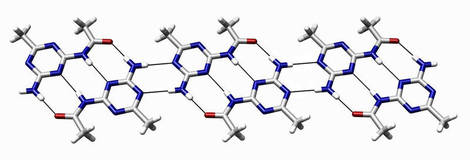Molecular Self-assembly
When the molecules of a material have the capability to arrange itself without the help or guidance of another source, the method is called molecular self-assembly. Molecular self-assembly is categorized into two. They are –
- Intramolecular self-assembly and
- Intermolecular self-assembly
Intermolecular self-assembly is more commonly known as molecular self-assembly and intramolecular self-assembly is commonly known as folding.
Related Article
TAKE A LOOK : MOLECULAR NANOTECHNOLOGY
Applications of Molecular Self-assembly
- Supramolecular systems
Supramolecular system refers to the arrangement of molecules through the method of non-covalent interactions and electromagnetic interactions. Since molecular self-assembly is similar in concept, it is considered as one of the main steps in supramolecular systems.
Some of the systems using non-covalent interaction are metal co-ordination, hydrophobic forces, van der Waals forces, and so on. The common supramolecular systems are the formation of vesicles, liquid crystal phases, and Langmuir mono-layers by surfactant molecules. The molecular self-assembly through hydrogen bonds is shown in the figure below.

- Human Body Application
The principle of molecular self-assembly plays an important role in the functioning of human cells. It can be seen in the arrangement of lipids to form the membrane, the arrangement of proteins to form quaternary structures, and the grouping of double helical DNA through hydrogen bonding of the individual strands. If the proteins that undergo molecular self-assembly is not folded correctly they may react to form insoluble amyloidal fibres. Such fibres may result in infective neurodegenerative diseases.
- Nanotechnology
Molecular self-assembly finds its greatest importance in the field of nanotechnology.
In nanotechnology, the materials used will be nano-sized. Such a method of self-assembly helps to attain the nano structure with the correct shape and functional groups of the molecules. Molecular self-assembly is commonly considered a “bottom-up” process, rather than a “top-down” process like lithography. In a top-down process, like lithography, a large material is shaped to form a nanomaterial.
As up-coming technology makes complex things simpler, there might be a time when the manufacture of microchips can be done with the help of molecular self-assembly. One of the main reasons for using self-assembly process for building nanomaterials is that they tend to change back into individual molecules that can be broken down by the body.
- 2-D Monolayers
The concept of 2-D self-assembly is also important in which a single layer of molecules is spontaneously assembled at interfaces.
After the invention of tunneling microscopy technique, the molecules could be easily arranged to form better order architectures at solid interfaces. When referring to nano-scale materials, 2-D monolayers are considered to be a highly crystalline architectural form of 2-D crystal engineering.

1 Comment
an end less application branch of engineering….nano nano technology